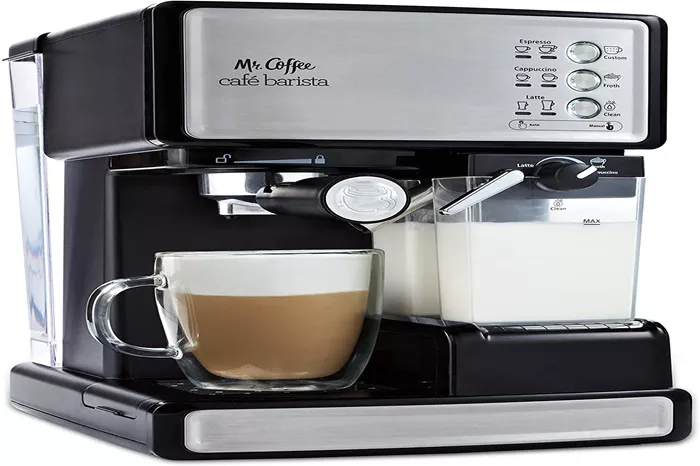Coffee makers are essential appliances in many households, but have you ever wondered how much energy they consume? Understanding the wattage of your coffee maker can help you make more informed choices when it comes to both energy consumption and your electricity bill. This article breaks down the average wattage of small coffee makers, offers tips on reducing energy use, and compares their energy consumption with other kitchen appliances.
Average Wattage
Small coffee makers typically use between 500 to 900 watts. This range depends on the specific model and its features, such as brewing capacity, heating elements, and whether it includes additional functions like timers or programmable settings. For example, a basic drip coffee maker will generally fall within the 600 to 800-watt range, while more advanced models with features like built-in grinders or frothing capabilities may use more power.
Single-Serve Machines
Single-serve coffee makers, such as Keurig or Nespresso machines, generally consume more energy. These appliances typically require between 900 to 1500 watts. This higher wattage is often due to their rapid brewing capabilities, as they heat water on-demand for each cup, which requires more power.
Energy Efficiency
Energy Consumption
Understanding how much energy your coffee maker uses can help you estimate its cost on your electricity bill. For example, consider a coffee maker that uses 900 watts. If it runs for 5 minutes (0.083 hours), it would consume about 0.083 kWh (kilowatt-hours) of energy. At an average electricity rate of $0.13 per kWh, this would cost you roughly $0.01 to brew a pot of coffee. While this may not seem significant for a single use, it can add up over time if you brew coffee daily.
Tips for Reducing Energy Use
While coffee makers are generally not among the highest energy-consuming appliances, there are ways to make your coffee brewing more energy-efficient:
Lower Temperature Setting: Many coffee makers have adjustable temperature settings. Using a lower temperature can reduce energy consumption without compromising the taste of your coffee.
Unplug When Not in Use: Coffee makers often continue to use energy when plugged in, even after brewing. Unplugging your coffee maker when it’s not in use can prevent this “phantom” energy usage.
Brew Only What You Need: If you don’t need a full pot of coffee, consider using a single-serve machine or just brewing a smaller amount to reduce overall energy consumption.
Comparison with Other Appliances
To put your coffee maker’s wattage into perspective, it helps to compare it with other common kitchen appliances:
Microwave: A microwave typically uses around 1000 watts, slightly higher than most small coffee makers.
Toaster: A typical toaster uses around 800 watts, making it similar in energy consumption to a small coffee maker.
Blender: High-powered blenders, such as those used for smoothies, can use between 300 to 1000 watts, with more powerful models requiring more energy.
As you can see, coffee makers fall somewhere in the middle in terms of energy usage, comparable to other small kitchen appliances.
Choosing an Energy-Efficient Coffee Maker
When shopping for a coffee maker, consider the wattage and the energy efficiency features. Lower wattage models often consume less power, but other factors, such as size and brewing speed, should also be considered.
Low Wattage Options
Some coffee makers are specifically designed for energy efficiency. Portable or compact models are often more energy-conscious, with wattage on the lower end of the spectrum. If you’re looking to reduce energy consumption, consider these smaller models, which are typically designed to use minimal energy without sacrificing performance.
Features to Look For
Many modern coffee makers come with built-in features that can help reduce energy consumption:
Auto Shut-Off: This feature automatically turns off the coffee maker after a set time, preventing unnecessary energy usage.
Energy-Saving Modes: Some machines have settings that optimize energy usage, such as brewing coffee at a lower temperature or adjusting the heating element to only operate when necessary.
Environmental Impact
The environmental impact of using energy-efficient appliances is significant. By choosing a coffee maker with lower wattage or energy-saving features, you can reduce your overall energy consumption and minimize your carbon footprint. While each coffee maker might not have a substantial impact individually, collectively, millions of energy-conscious consumers can contribute to reducing environmental strain.
Additionally, some manufacturers are focusing on sustainability, offering coffee makers made with recyclable materials or designed for long-term durability. Investing in these models not only helps conserve energy but also promotes a circular economy by reducing waste.
Conclusion
In conclusion, the wattage of a small coffee maker can vary depending on the type and features, typically ranging from 500 to 1500 watts. Understanding your coffee maker’s energy consumption and implementing energy-saving practices can make a noticeable difference on your electricity bill and help contribute to a more sustainable future. By choosing a lower-wattage coffee maker or one with energy-efficient features, you can enjoy your morning brew while being mindful of your environmental impact.
Related topics:
- How Many Espresso Beans Equal a Cup of Coffee?
- How Many Cups of Coffee Can You Brew from a Pound of Beans?
- How Many Coffee Beans for a Cup of Coffee?


